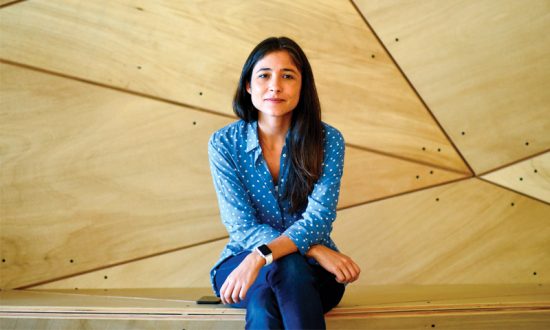An economist and MBA graduate, Irene has taken advantage of her technical skills to develop ed-tech strategies into Uruguay’s educational system. During her nine years of experience, Irene González has led the design and the implementation of several technology projects to help teachers enhance pedagogical practices and the students to improve learning outcomes. She has contributed to positioning Plan Ceibal as an education innovation agency, being a reference, and inspiring many public organizations in the region and the world.
Plan Ceibal is a government agency created in 2007 with the aim of providing technology to enhance Uruguayan education policies. One of the main factors that explain its success is Ceibal´s institutional design and governance: Plan Ceibal works in collaboration with the education system and follows its guidelines and policies, but it is not part of that system. That has enabled it to be an agile and flexible actor, with high innovative potential and a strong capacity to implement projects. Thirteen years have passed since its creation. There have been many lessons, hits and misses, and each of these has played an important role in the construction of this public policy that is a source of pride for all Uruguayans.
Layer Over Layer
Looking at Plan Ceibal’s history, it is possible to clearly distinguish three stages that reflect the evolution of the institution’s vision and goals. In the first stage (2007-2011), the foundations of Plan Ceibal as a plan of inclusion and equality of opportunities were laid. The focus was to guarantee access and reduce the existing digital gap in Uruguayan society. For that purpose, a massive deployment of digital infrastructure took place. Every teacher and every student in the public school system between the ages of 6 and 14, received a device (laptop or tablet) free of charge.
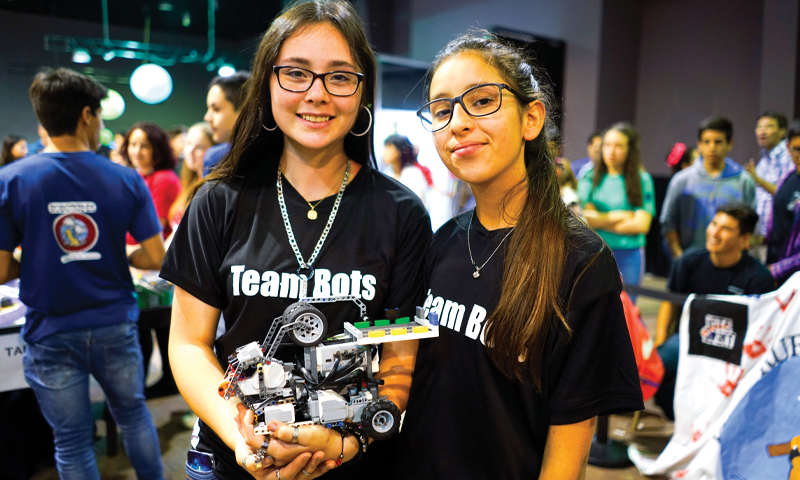
Access of connectivity also was a huge milestone. Every school in rural and urban settings obtained internet access. That means more than 500,000 operating devices, 100% of education centers with Wi-Fi connectivity and internet access and, on top of that, 99% of the schools in urban areas with installed video conferencing equipment, leading Uruguay to become the country with the largest video conferencing network in Latin America. At this stage, processes related to equipment replacement and repair systems were designed to guarantee the policy’s sustainability. At the second stage (2011 – 2014) the potential offered by that technology of improving learning opportunities became evident, and as a result of that availability of resources, teacher development had new needs and needed revision.
It was at that time that Ceibal started creating an ecosystem of resources and platforms that could be used at schools as tools for learning and helped teachers to include technology in their practice in a more fruitful way. At that moment, was the beginning of platforms deployment: Crea (Learning Management System), PAM (adaptive mathematics platform), the Digital Library, SEA (online learning assessment platform), the repository of open educational resources, among others. Additionally, massive deployment of robotics kits is defined, allowing each school to have a set of 6 robotics kit, making a total of almost 5000 kits and numerous teacher training workshops. Physical and chemical sensors and 3D printers constitute other examples of educational resources deployment happening at that period
At the third stage (2014 – present) an interesting shift occurred in terms of teachers´ inquiries about technology. The technical challenges were more frequently replaced with pedagogical challenges. Questions such as “how can I integrate this resource into my planning?”, “How does this platform interact with the curriculum?”, “What are the advantages of technological resources over the traditional approach?” increasingly became fundamental in our conversations with teachers. The consolidation of a robust teacher development offer was a necessary condition for a real impact in teaching and learning processes. In addition to that, new methodologies emerged, blended strategies started to be explored and led to promote new approaches such as new pedagogies for deep learning, computational thinking, design thinking, and project-based learning to solve real problems. The use of technologies within those possible methodologies enabled teachers to think about new learning environments, knocking down the classroom walls and thinking outside the box.
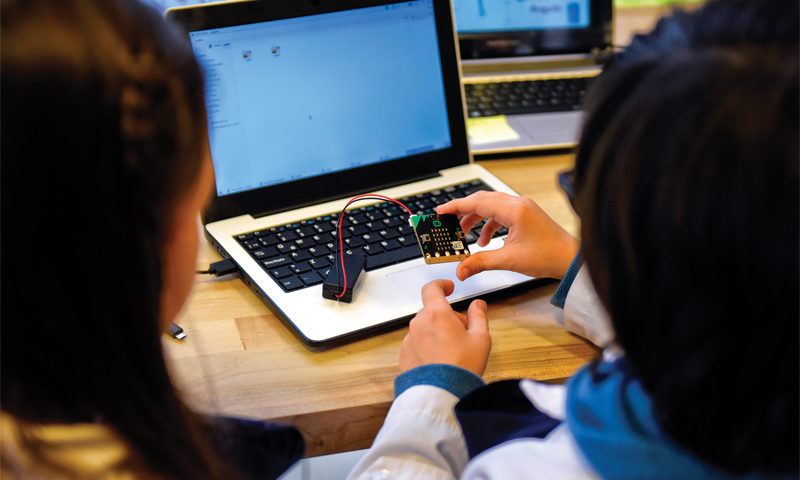
What if…?
Every strategic project developed in these years has a common core: identifying and analyzing an existing problem in the education system and think how technology may solve it. A good example is, “Ceibal en Inglés” an initiative that allows all children from 4th to 6th year of Primary school to learn English, even though the number of local English teachers
in Uruguay was not enough. To make it happen, an innovative blended methodology of language teaching was created, based on the connection through video conference of professors located in different countries around the world, with the students from Uruguayan public schools. Through an alliance with the British Council, professors from the Philippines, United Kingdom, Argentina, and even Uruguay, teach English to Uruguayan kids, making the language teaching program to also become a cultural exchange space.
Other elements such as the use of our LMS and facilitation of the classroom teacher of other learning moments during the week are crucial for this methodology to succeed. Ceibal followed the same logic when analyzing the families’ lack of economic resources that could not guarantee the students access to required books and textbooks. Technology quickly appeared as an ally: what if we agree with the editorials to acquire all textbooks’ rights and create a digital library for students to have access through their devices? That crazy idea started to evolve until it became what today everyone knows as “Biblioteca País”: a digital library with more than 8,000 books of free access for students, teachers and Uruguayan citizens in general, where you can find from the most specific technical book to the last bestseller displayed in the book stores.
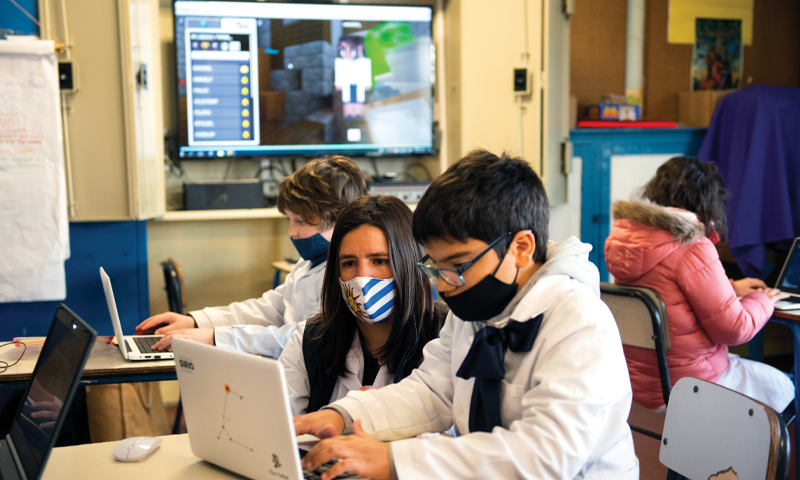
Place Your Bets!
Looking at the future, Plan Ceibal´s strategic plan emphasizes two main projects. These projects have an essential role to play as leverage of educational change. “Red Global de Aprendizajes” is a joint project of Plan Ceibal and the Educational System launched in 2014 to promote a change in the ways of teaching and learning happens at schools, focusing on
the development of XXI century skills, in which technology has a central role as an accelerator of the pedagogic results.
Nowadays, more than 800 schools in the country are part of it, and annually more than 10,000 school leaders take part in the different training workshops designed to develop skills in teachers, principals, and supervisors.
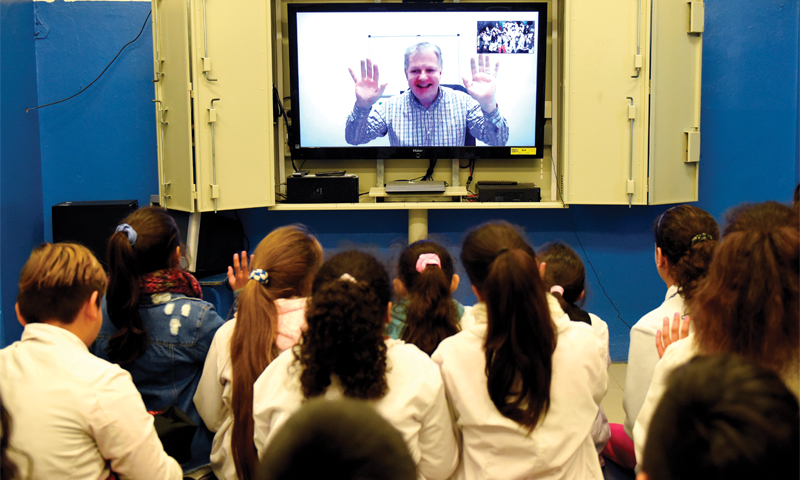
Apart from being an internal network that connects teachers and students at all levels, “Red Global de Aprendizajes” is part of the movement “New Pedagogies for Deep Learning” led by the Canadian pedagogue Michael Fullan. Being part of the international network enabled us to engage in powerful conversations and reflections with other countries’ educational systems such as Finland, Australia, the US, Japan, New Zealand, and Holland. Computational Thinking Program is another flagship we promote in Ceibal. There is a quote from Conrad Wolfram that captures our vision very well, and says: “How to prepare young people for a hybrid human-machine world? In this new age, it’s not what you know, it’s what you can compute from knowledge”. With such vision in mind, in 2017 we started a remote teaching program through video conference that enabled students of primary school to work in projects that aim at the development of computational thinking and solve complex problems, using programming and robotics as main support. We have also distributed more than 50,000 micro: bit
boards, which are now part of the usual “landscape” in the prototypes of solutions carried out inside and outside the classrooms.
Now what?
The Pandemic has shown Uruguay’s strengths and abilities to face the crisis. On March 16, the government canceled in-person classes, and the same day they announced that all lessons would happen online through the virtual Platform “Crea” of Plan Ceibal. More than 95% of students have used Crea to get connected with teachers and classmates. The other educational platforms (math, digital library, online assessment, among others), as well as the universal access to computers and good fiber-optic internet access all over the country, were crucial elements that enabled the continuance of learning at home. These capacities caused the international recognition of Uruguay’s response to the crisis in educational terms. We are now starting the last term of the academic year, and students are currently attending school in-person. Yet, technology is still present, and it continues to be an essential element of blended education.
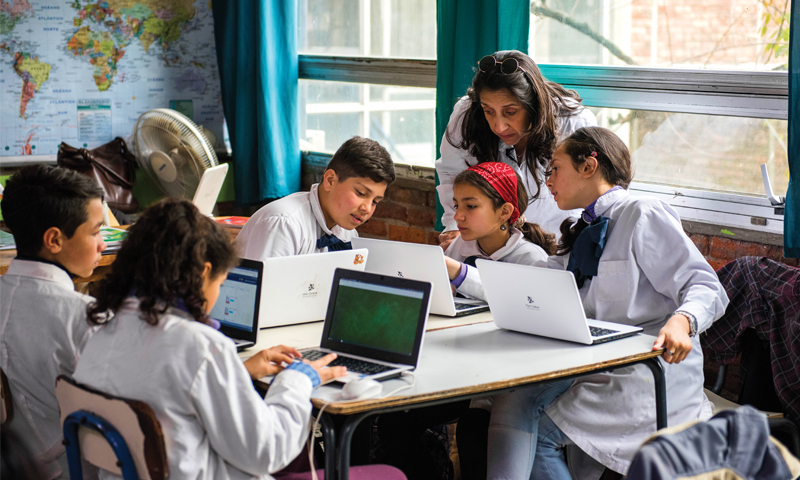
However, in spite of the goals achieved, the country has several challenges to face and problems of social inclusion that question us: the connection levels, the learning gaps in different socio-economic contexts, the family’s involvement in the educational process, After thirteen years, we look at the future focusing on integrating the strengths, resources, and knowledge acquired, to fulfill the needs and possibilities of an educational system that will face enormous challenges, and to support their ongoing processes of technological innovation. Accompanying the educational system and co-designing the processes of change with authorities, teachers, and students, is a considerable challenge, but the people involved have the professional skills and experience to look at that promissory future with confidence.




